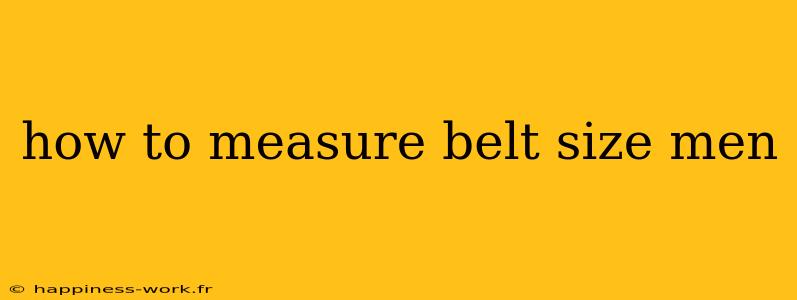Understanding your belt size is crucial for a well-fitted, comfortable accessory that complements your style. Whether you’re shopping for a new belt or trying to find the perfect gift, knowing how to measure your belt size can make all the difference. In this article, we’ll explore the steps to accurately measure your belt size for men, along with some additional insights and tips to ensure a perfect fit.
Step-by-Step Guide to Measuring Your Belt Size
Step 1: Gather Your Tools
To measure your belt size accurately, you will need:
- A flexible measuring tape or a piece of string
- A ruler (if you use string)
- Your favorite pair of pants (optional)
Step 2: Measure Your Waist Size
- Find Your Natural Waist: Stand up straight and locate your natural waistline, which is typically located just above your belly button and below your ribcage.
- Use the Measuring Tape: Wrap the measuring tape around your waist, making sure it’s snug but not too tight. Record the measurement in inches.
- Alternatively, Use Your Pants: If you have a pair of pants that fit you well, you can measure the waist size tag. Men’s belt sizes often correlate to the waist size of pants.
Step 3: Add Additional Inches
Most belt manufacturers recommend adding 1-2 inches to your waist measurement for a comfortable fit. For example, if your waist measures 34 inches, consider purchasing a belt that is 36-38 inches long.
Example:
- Natural Waist Measurement: 34 inches
- Recommended Belt Size: 36-38 inches
Why Accurate Measurement Matters
Choosing the wrong belt size can lead to discomfort and frustration. A belt that is too tight can dig into your waist, while one that is too loose might not hold your pants up properly. An accurately measured belt not only enhances comfort but also contributes to a polished and put-together appearance.
Additional Tips for Finding the Perfect Belt Size
- Belt Styles Vary: Be mindful that different belt styles may fit differently. For example, dress belts might be sized differently than casual belts.
- Material Considerations: Leather belts tend to stretch over time, while fabric or synthetic belts might retain their shape. Be sure to consider the material when choosing a size.
- Consult Size Charts: Many retailers provide sizing charts specific to their products. Always check these before making a purchase.
Frequently Asked Questions
Q1: What if my waist size is in between sizes?
If your waist size falls between standard sizes, it is generally recommended to round up to the nearest size for comfort.
Q2: Can I adjust the size of my belt?
Most leather belts can be adjusted by adding additional holes, while some fabric belts come with adjustable lengths. If you buy a belt that feels slightly large, consider adding a hole or two for a better fit.
Q3: How do I convert waist size to belt size in different units?
Many countries use different sizing standards (e.g., centimeters). To convert inches to centimeters, simply multiply your measurement by 2.54. For example, a 36-inch belt is approximately 91.44 cm.
Final Thoughts
Measuring your belt size accurately is a straightforward process that can greatly enhance your wardrobe. By following the steps outlined above and considering additional tips, you'll be well-equipped to find the perfect belt that not only fits but also flatters.
With this knowledge, you're ready to shop confidently for your next accessory. Whether you’re treating yourself or buying for someone else, a well-chosen belt can elevate any outfit.
References
For further reading and additional tips, check out the original content on WikiHow authored by various contributors.
By following these guidelines, you not only ensure comfort but also make a stylish statement. Happy shopping!
